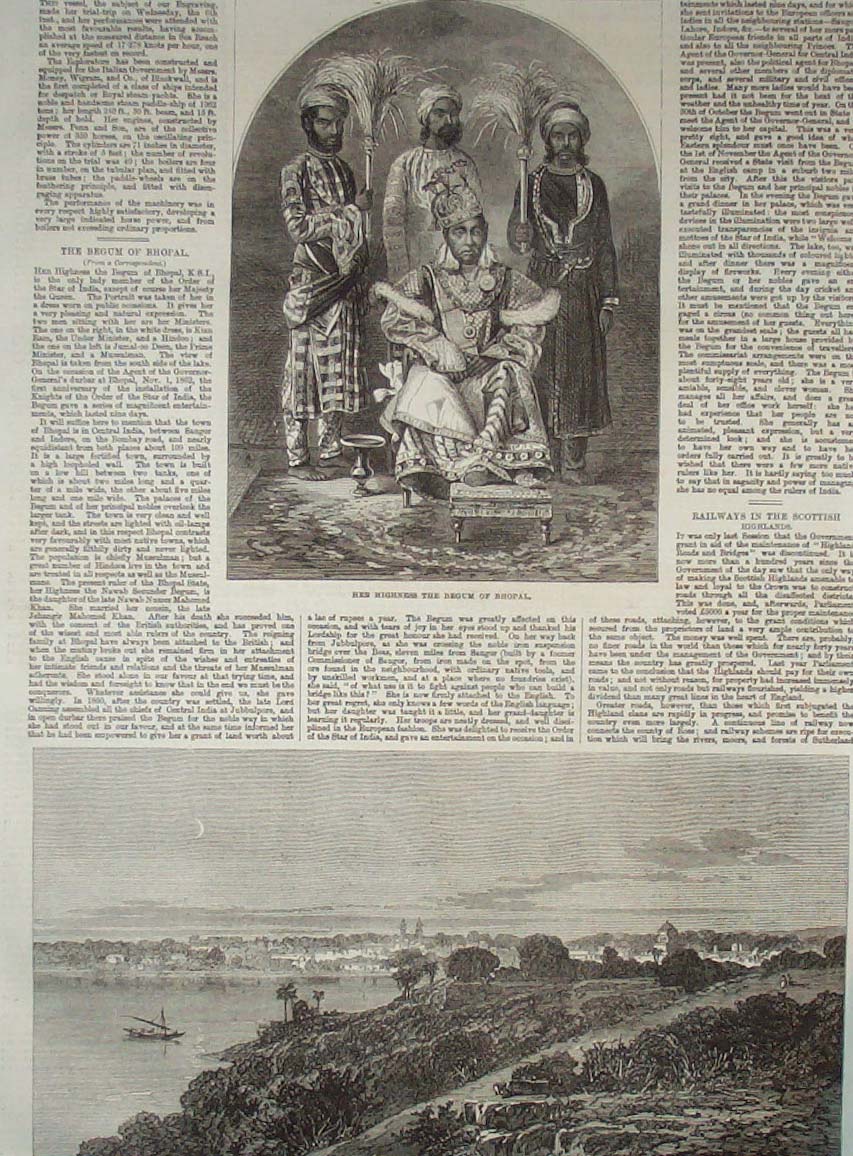

Favorable coverage of the Begam of Bhopal, Sikandar Begam, in the Illustrated London News, 1863
Source: ebay, June 2001
"The top print is titled "HER HIGHNESS THE BEGUM OF BHOPAL". The article states, in part, that HER HIGHNESS THE BEGUM OF BHOPAL, K.S.I. is the only LADY member of THE ORDER OF THE STAR OF INDIA, except, of course, HER MAJESTY, THE QUEEN. The bottom print is titled VIEW OF THE CITY OF BHOPAL. The article about the print states, in part, that the town of BHOPAL is clean and well kept and the streets are lit with oil-lamps after dark."
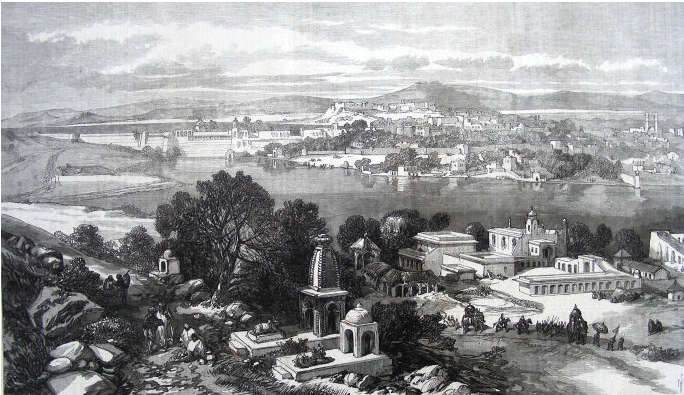
*Shah Jahan Begum, Begum of Bhopal (1838-1901);
a photo by Bourne and Shepherd, 1869* (BL)
*Shah Jahan Begum, Begum of Bhopal (1838-1901);
a photo by Bourne and Shepherd, early 1870's* (BL)
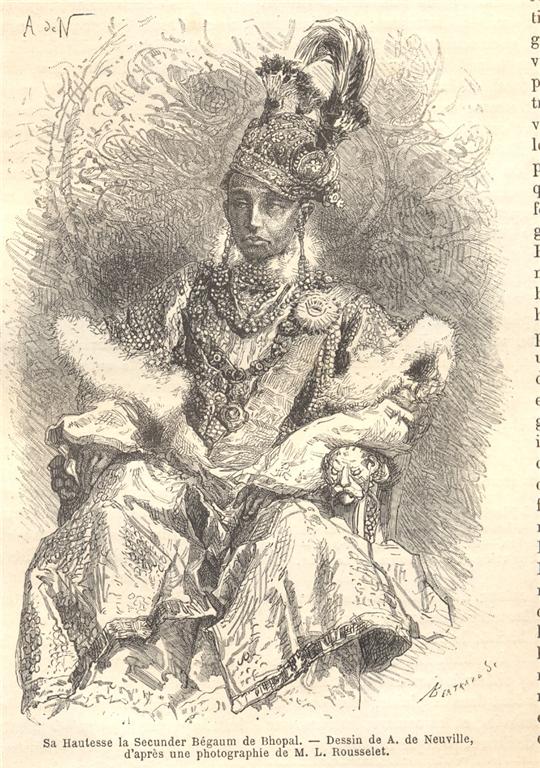
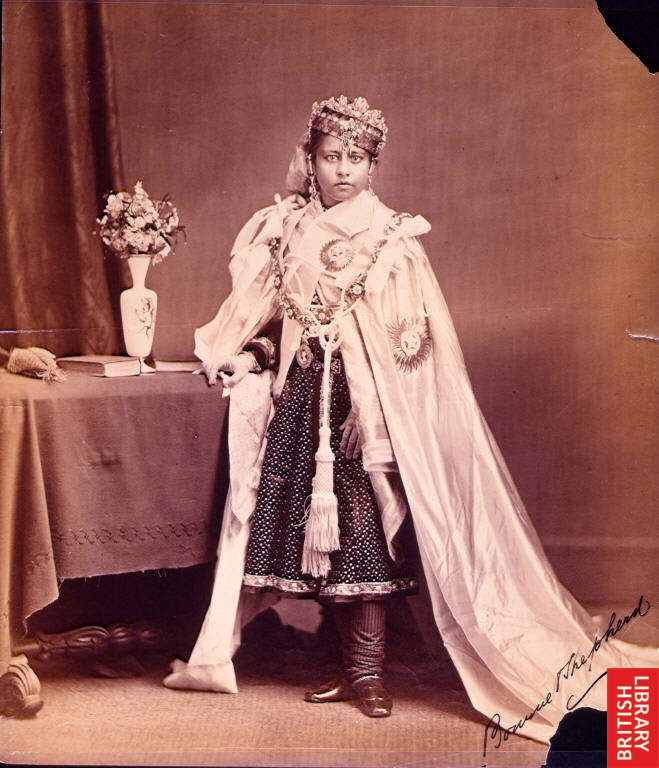
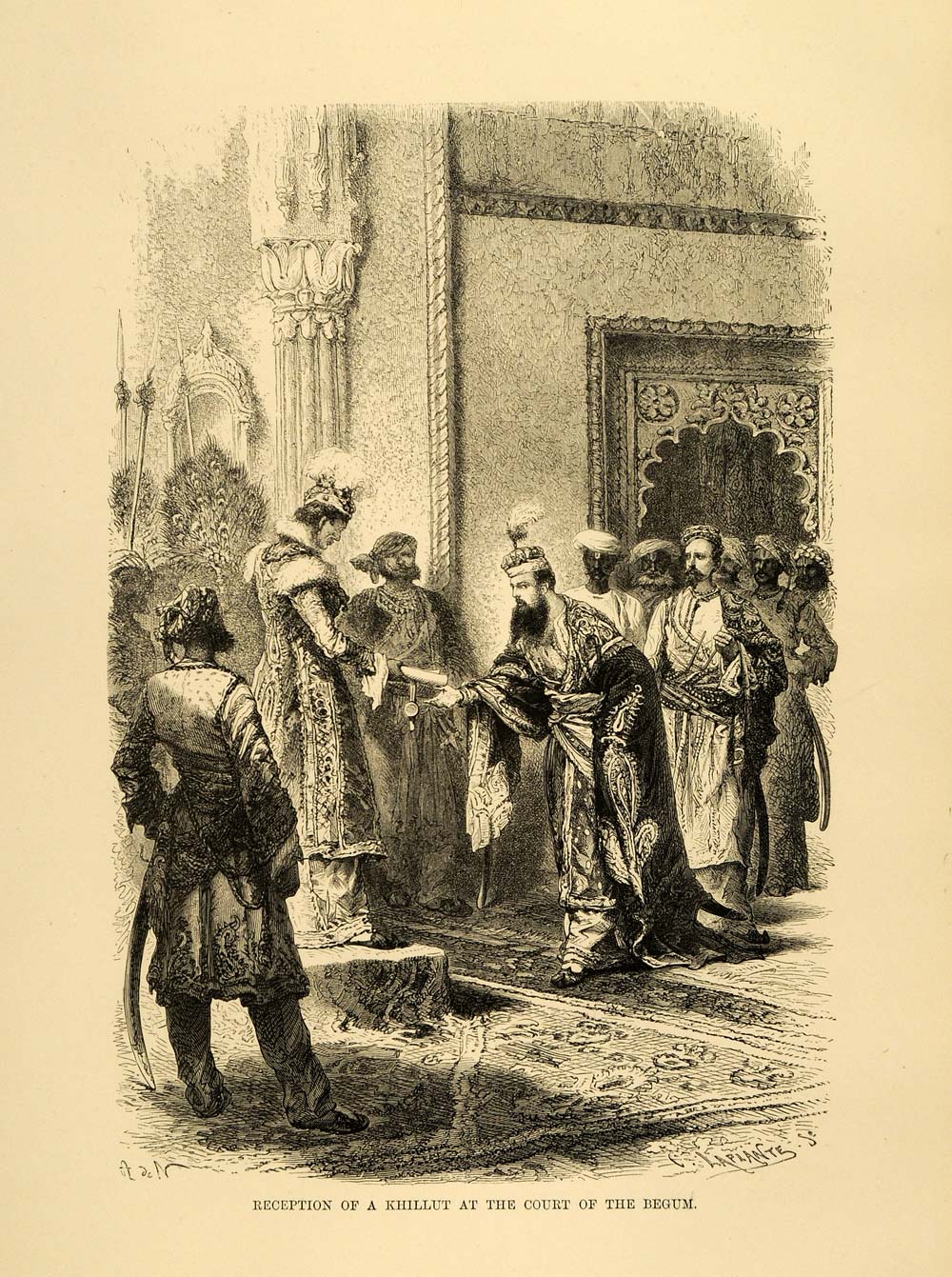
"Reception of a khillut [robe of honor] at the court of the Begum," an engraving from 1878
Source: ebay, June 2007
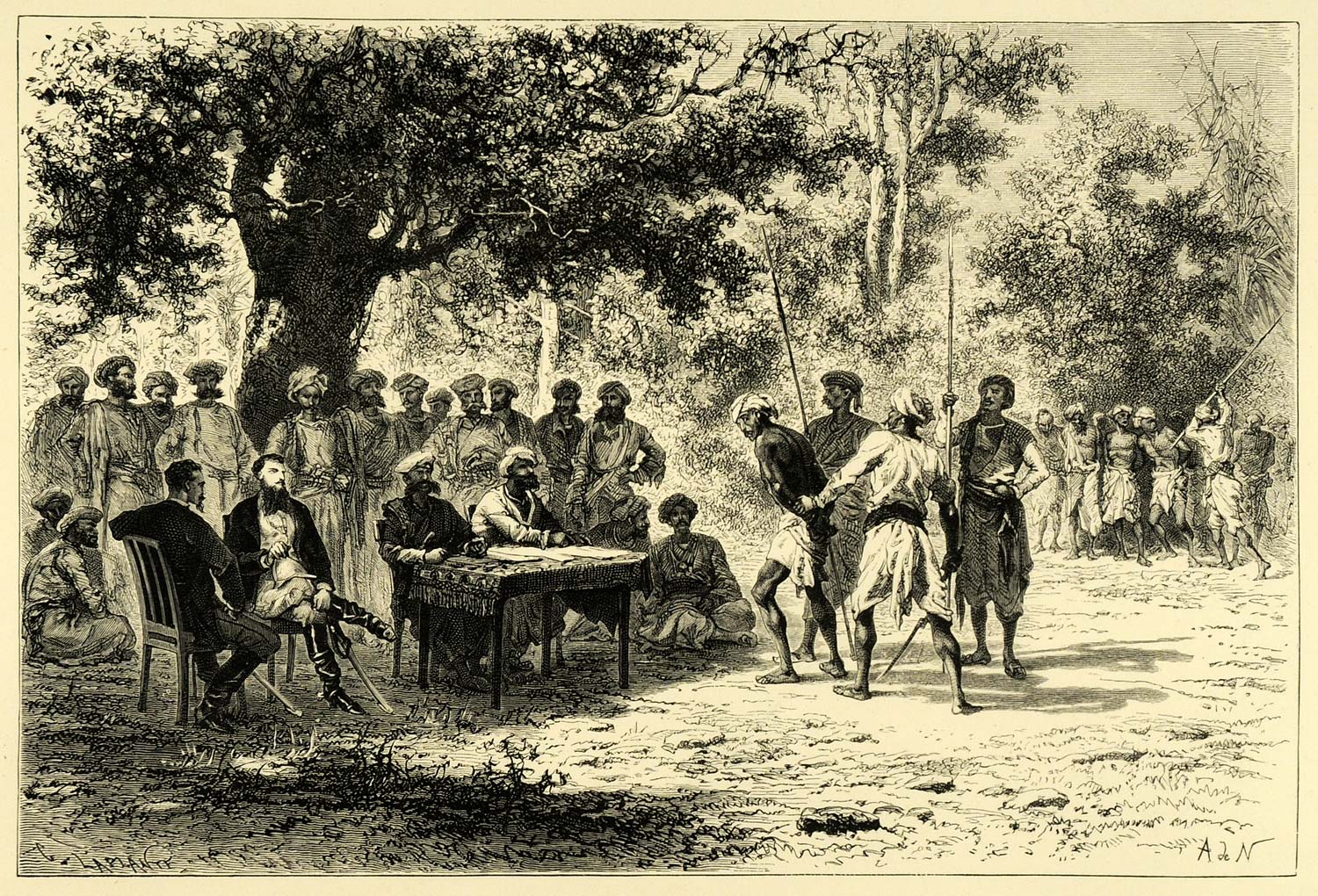
A Bhopal state magistrate examines a case of theft from a British visitor; a wood engraving, 1878
Source: ebay, Dec. 2005
From the accompanying description:
"...Forthwith all my servants in great excitement set about searching in the neighbourhood of the camp; and after an hour's hunting they brought me back the box broken open by blows from a pickaxe, and bereft of its contents. This was a heavy loss to me. Besides a valuable watch and a thousand rupees in silver, it contained a very fine collection of diamonds and jewels presented to me by various rajahs; and, moreover, bills of exchange on the bankers at Bhopal for a very large amount. I found myself completely plundered.I sent word in haste to the Bhopal magistrate of the district, who arrived the same day at Sanchi, with a strong escort of scribes and gendarmes. His first act was to put the chowkeydars in irons, and to seize all the population of the two hamlets, men, women, and children. These unfortunate people were all penned into an enclosure of stakes and cords to await their examination. The next day an express sent from Bhopal informed me that the Government of the Begum declared itself responsible for the crime, and would indemnify me for my losses. A judge from the capital came to preside at the court. The villagers were examined one after another, but denied all participation in the robbery. At last a poor child, eight years old, frightened at the terrible whip of the sepoys, pointed out four of our chowkeydars as the guilty parties. These wretched men, when brought before the tribunal, allowed themselves to be lacerated by the whip rather than confess; nevertheless, the proofs were overwhelming. One of them had been placed by me at the very spot where the thief had effected an entrance into the tent by cutting the canvas with his knife, while another had been seen by one of my servants during the night on the spot where the strong box had been found; but nothing could wrest a confession from him. Some days afterwards the bills of-exchange, of the value of which the thieves were ignorant, were found near the village; and the Begum's Government indemnified me for my loss, but nothing could replace for me the memorials to which I attached so great a value."
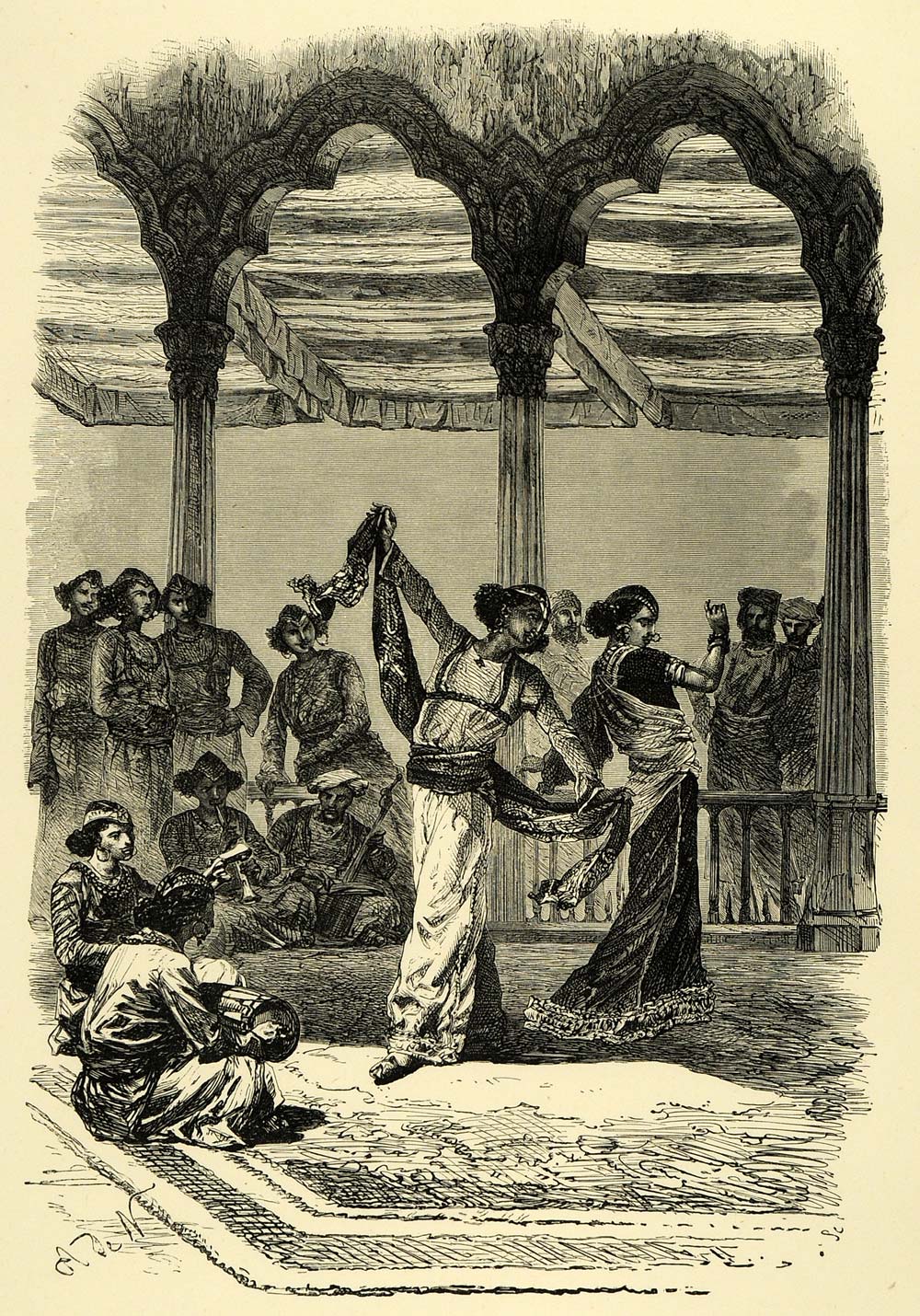
"The Cathacks," probably by A.
de Neuville (Paris: Librarie Hachette, 1878); the scene is
Bhopal
From the original description:
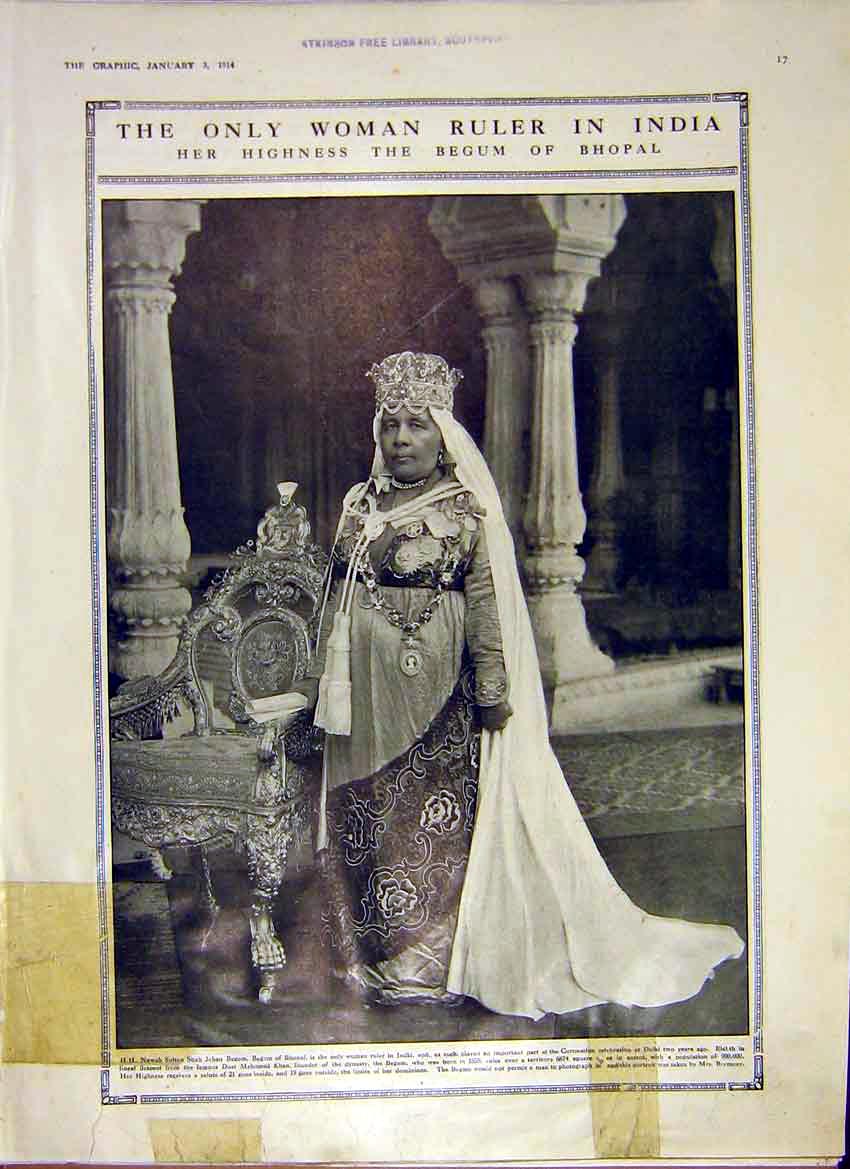
"The only woman ruler in India-- Her Highness the Begum of Bhopal," a photo of Kaikhusrau Jahan, from The Graphic, 1914
Source: ebay, Mar. 2006
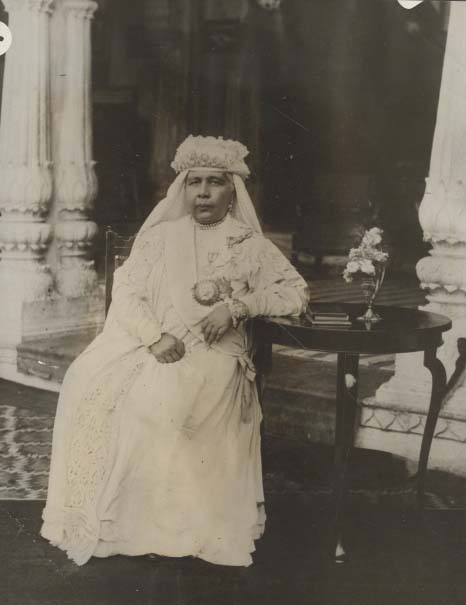
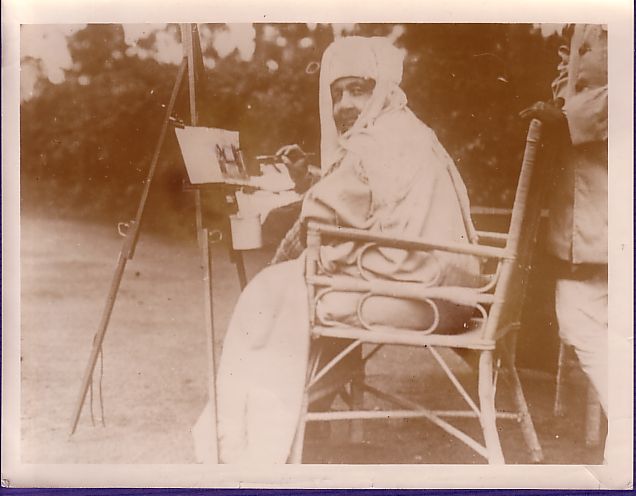
Kaikhusrau Jahan, the last Begam of Bhopal (r.1901-26), painting in the garden, after having resigned the throne to her son; a photo, 1930
Source: ebay, May 2007
== Indian Routes index == Indian Routes sitemap == Glossary == FWP's main page ==